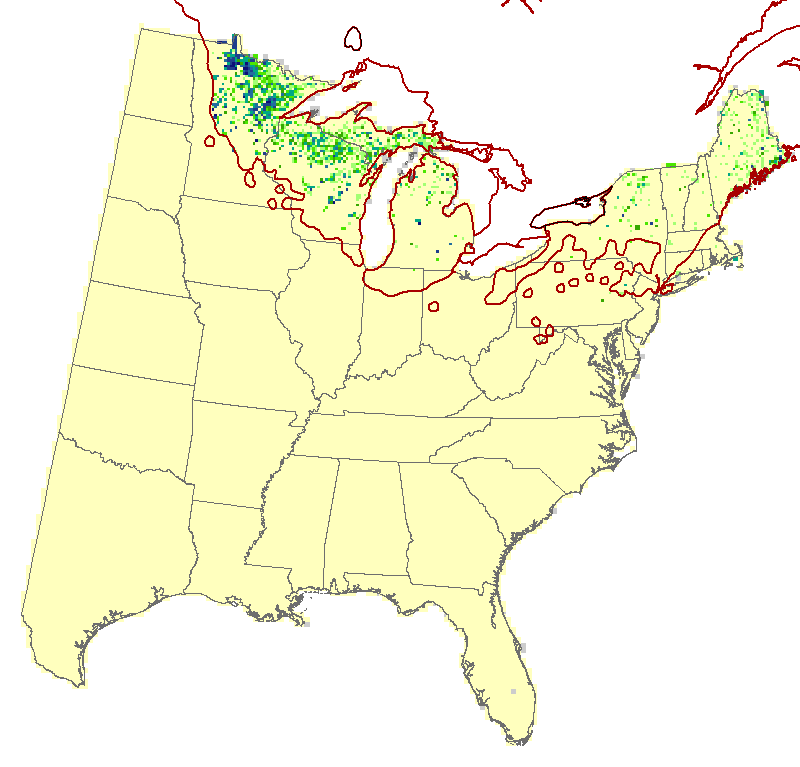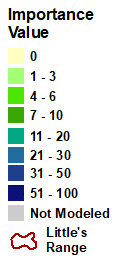tamarack (native) (Larix laricina)
Model Reliability: High
| GCM SCENARIO | % Area Occ | Ave IV | Sum IV | Future/Current IV |
|---|---|---|---|---|
| Actual | 4.5 | 9.9 | 13120 | N/A |
| RFimp | 6.3 | 6.2 | 11583 | 0.88 |
| CCSM45 | 8 | 5.9 | 13787 | 1.19 |
| CCSM85 | 8.4 | 5.9 | 14652 | 1.26 |
| GFDL45 | 8.4 | 5.7 | 13929 | 1.2 |
| GFDL85 | 8.3 | 5.3 | 12987 | 1.12 |
| HAD45 | 8.4 | 5.8 | 14256 | 1.23 |
| HAD85 | 8.4 | 5.2 | 12889 | 1.11 |
| GCM45 | 8.8 | 5.4 | 14015 | 1.21 |
| GCM85 | 8.9 | 5.2 | 13516 | 1.17 |
Regional Summary Tree Tables
Summaries for tree species are available for a variety of geographies, in both PDF and Excel format. These summaries are based on Version 4 of the Climate Change Tree Atlas
Interpretation Guide
Tamarack is a narrow range (3.3% of area) and sparsely distributed species but with high importance when it occurs. Its highly reliable model does not show much change in habitat under any scenario of climate change. Though it is quite common within its range, it has low adaptability (susceptible to fire topkill and insects) and is classed as poor in capability; SHIFT, however, does suggest it may be a decent species for infill planting.
Family: Pinaceae
Guild: pioneer, moist-site, shade intolerant
Functional Lifeform: small to medium sized deciduous conifer
| 3.1 | -0.48 |
| -1.24 |  |
MODFACs
What traits will impact tamarack (native)'s ability to adapt to climate change, and in what way?:
Primary Positive Traits
Primary Negative Traits
Fire topkill Shade tolerance Insect pests



